Natural builders strive for a self-sufficient life with the lowest possible impact on nature. Not so surprising that they are also lovers of small houses, preferably built with earth and straw. If possible, they even grow their own food.
Straw, soil and plaster
Simon and Jasmine Dale from Wales are fans of natural building materials and live in harmony with nature. Simon has now built his own house twice, in which he has used straw bales as insulating building blocks, finished with earth and lime plaster.
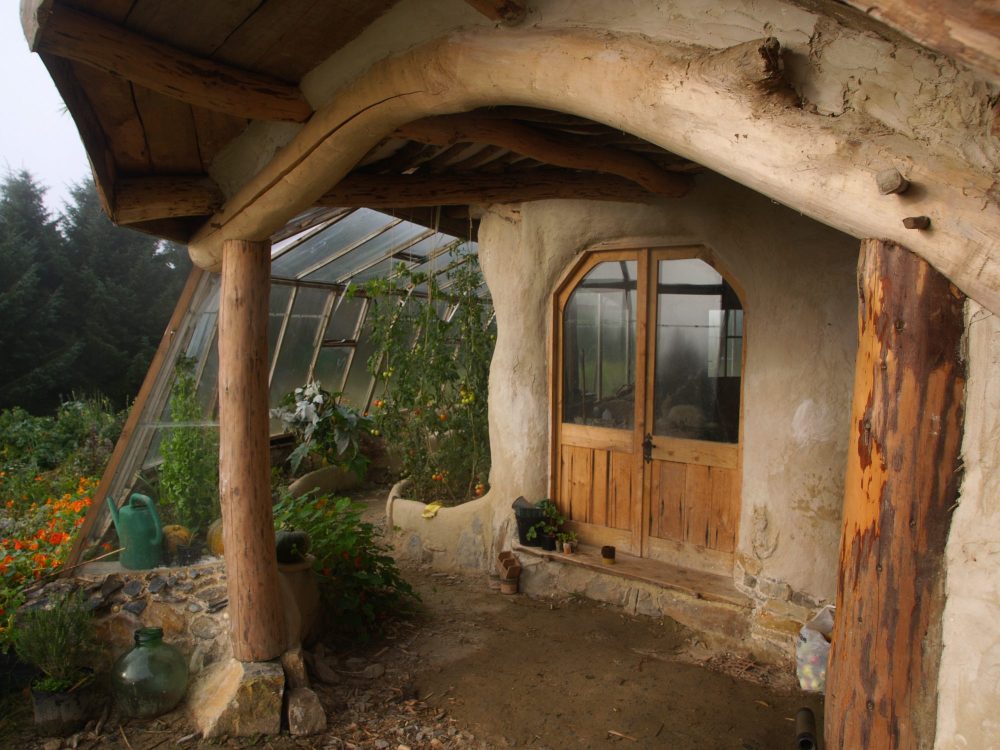
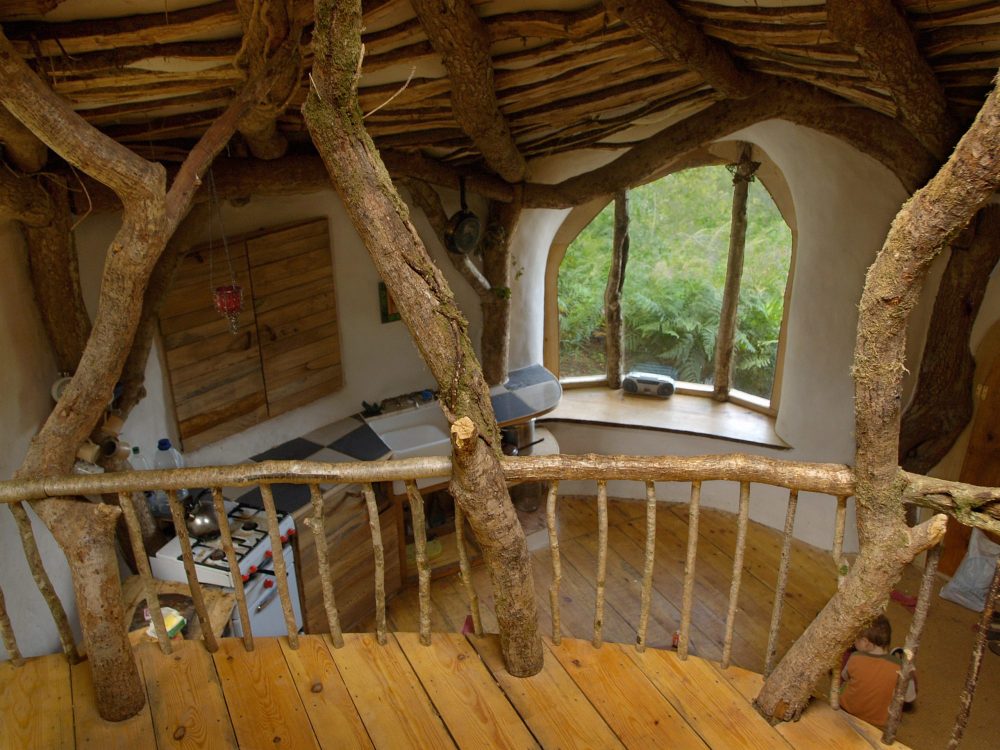
Simon says: “We make a frame of oak thins, free wood from the environment, and build a roof with trusses of round timber: self-supporting, locally available, aesthetically pleasing and easy to perform.” Straw is processed in the buildings with Cob (clay, sand and water), lime and wooden frames. Jasmine emphasizes the importance of natural buildings: “We are at a crossroad between building, housing and living. Let’s choose the Living Earth way.”
Also watch this inspiring video about natural building and living by Simon and Jasmine Dale.
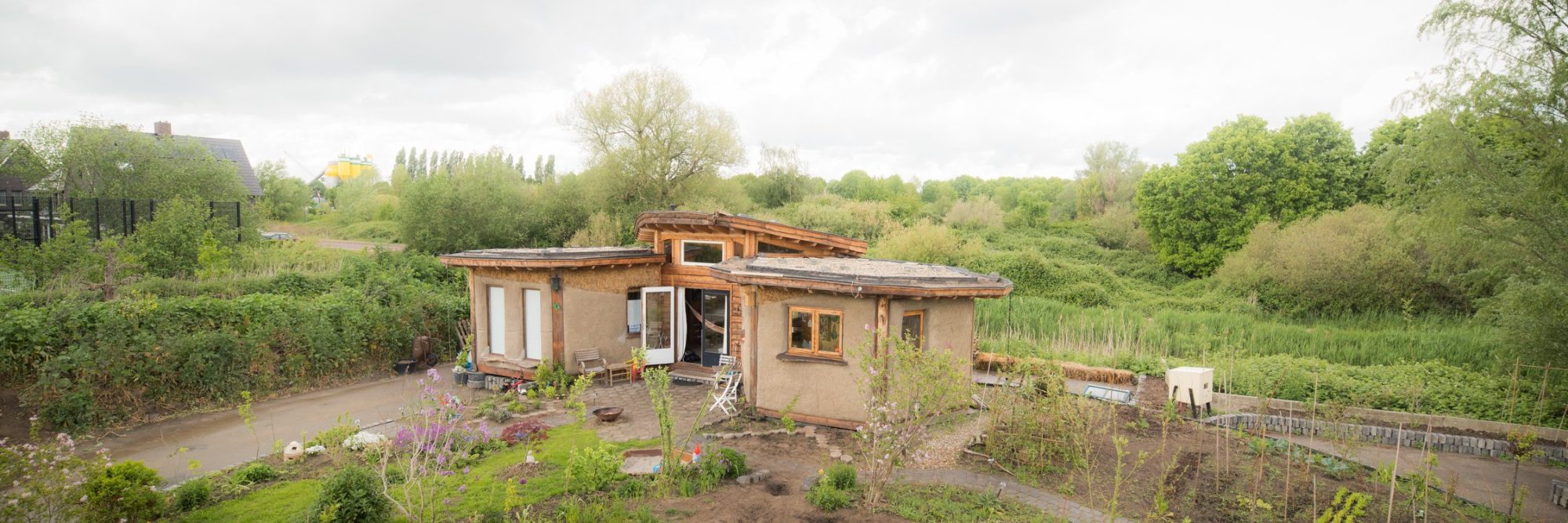
Minitopia’s Straw Palace from Nadja
In Minitopia, Den Bosch, experiments are underway with new forms of living. Straw builder Nadja van Griendt, together with Waiworrie, built a demountable house of straw bales and loam: “Our house of approximately 50 m2 has 3 units, each unit is a hexagon. The construction is by Douglas, the wooden frame is filled with custom-made straw blocks and the walls are finished with three layers of loam. The roof has a large overhang to protect the mud walls. The rest of the materials, such as windows and doors are second-hand or reused to make the house as sustainable as possible.”
During the construction a short documentary was made about: Nadja’s straw palace.
Evelyne and her Kerterres
25 years ago Evelyne Adam built a hemp and lime octagonal cottage with a thatched roof. A very simple and natural house, because she wanted to be as close to nature as possible. But it wasn’t close enough, so she started to build a round house, continued to improve her Kerterre, and eventually moved in. The main materials are long hemp fibres, hydraulic lime and some sand and stones.
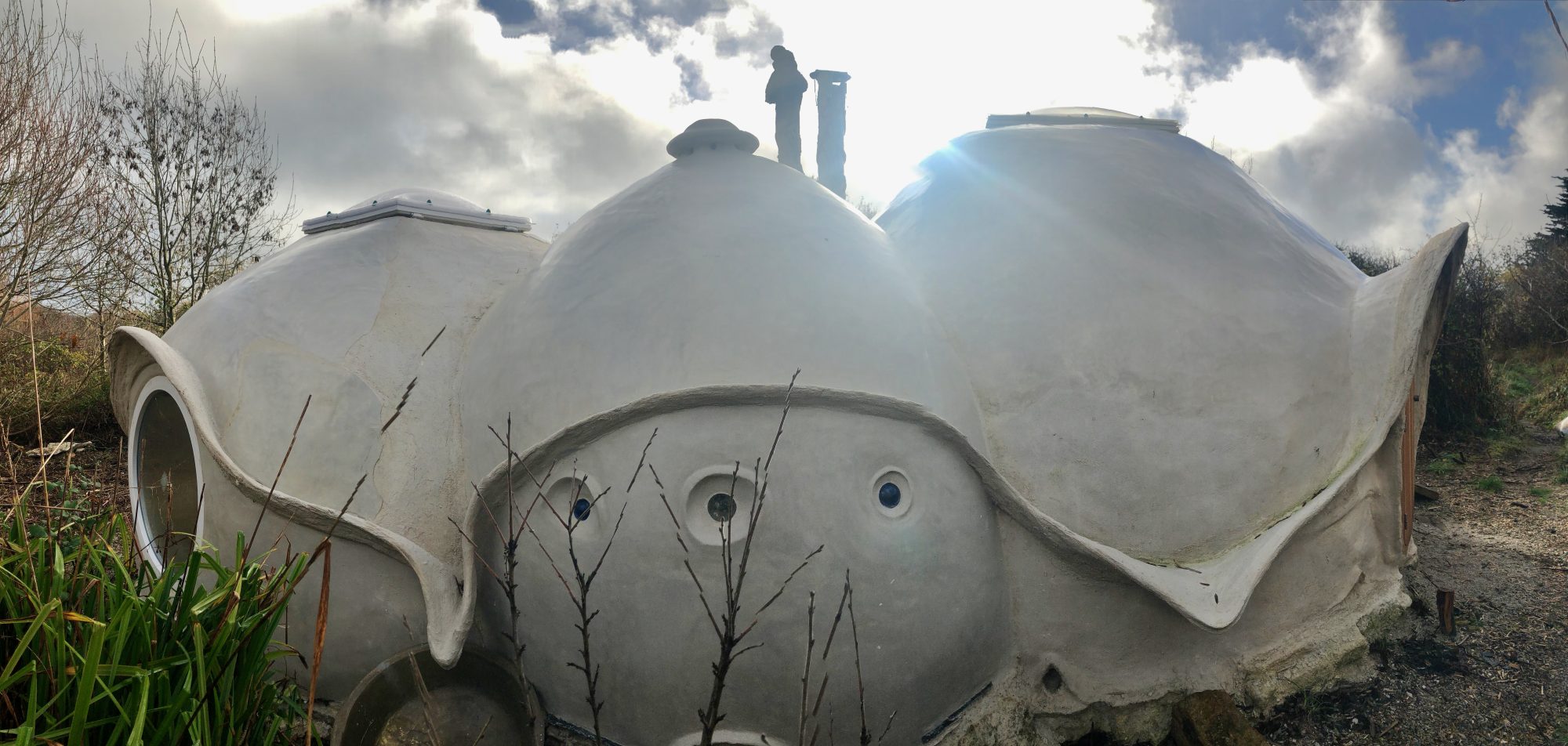
Evelyne Adam: “The Kerterres can be connected to all kinds of installations, just like a small house, a yurt or a standard house. Some of our Kerterres are equipped with solar panels and we plan to get running water from the well with a solar pump. The thatched house has a wood fired boiler, which can also be installed in a Kerterre. There are many solutions and we are always looking for new off-grid concepts.”
Meet: Evelyn Adam and Kerterre.
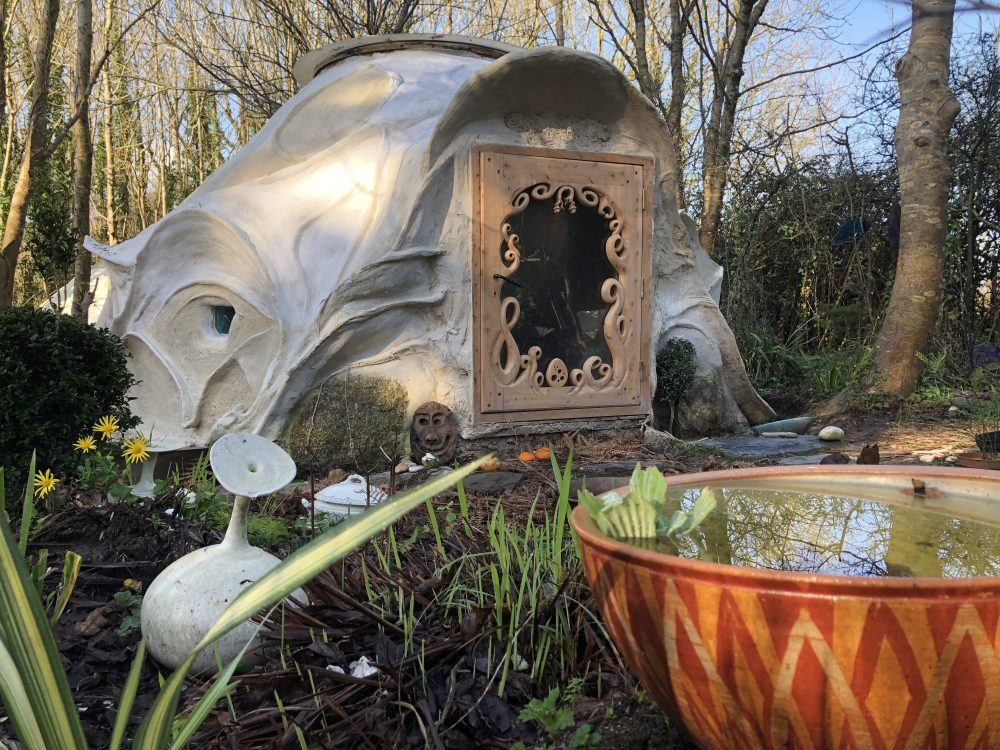
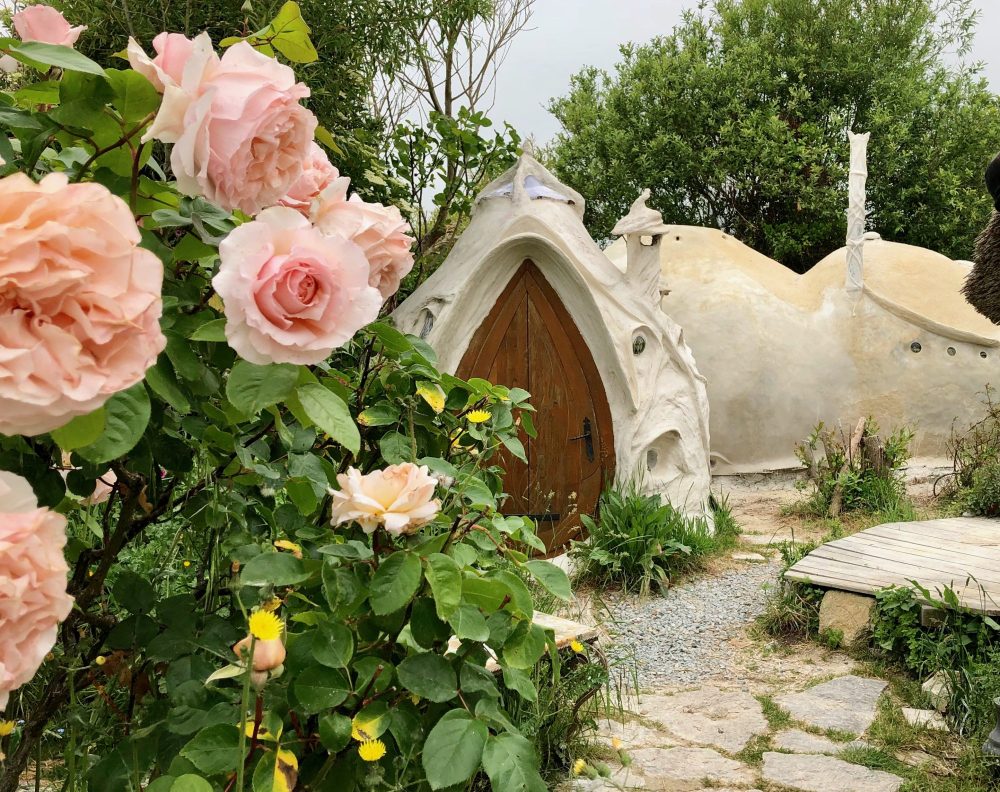
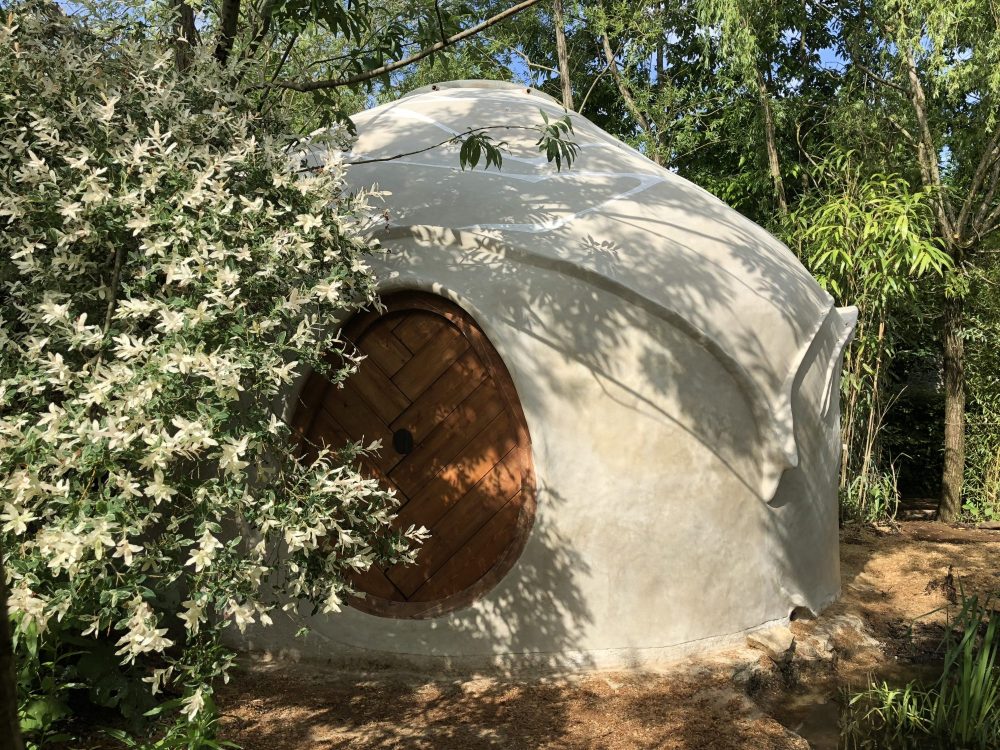
Lisa and Rich
The stunningly beautiful cottage with ‘carved’ Cob walls overlooks the banks of a small stream in Somerset, England. Lisa and Rich collected roundwood from the Larch and chestnut trees from the local forests to build the frame and used clay from the stream to make Cob.
The northern and eastern facades of the cottage are constructed with insulating straw bales, which are finished with Cob. The southern and western facades are gracefully finished by sculpting with the Cob. The roof of the cottage is tiled with cedar shingles. “A shingle roof can last between 50 and 80 years,” Rich says. He is an artisan woodworker and made the beautiful windows and the artistic door himself. Rich runs a natural construction company called Notchmakers, specializing in high quality custom doors and windows.
You can find more examples of nature homes at: Natural Homes.
Text and illustration: Marcel van Mierlo.
Parts of the above article could previously be read in an article by Marcel for Klein Wonen Magazine.
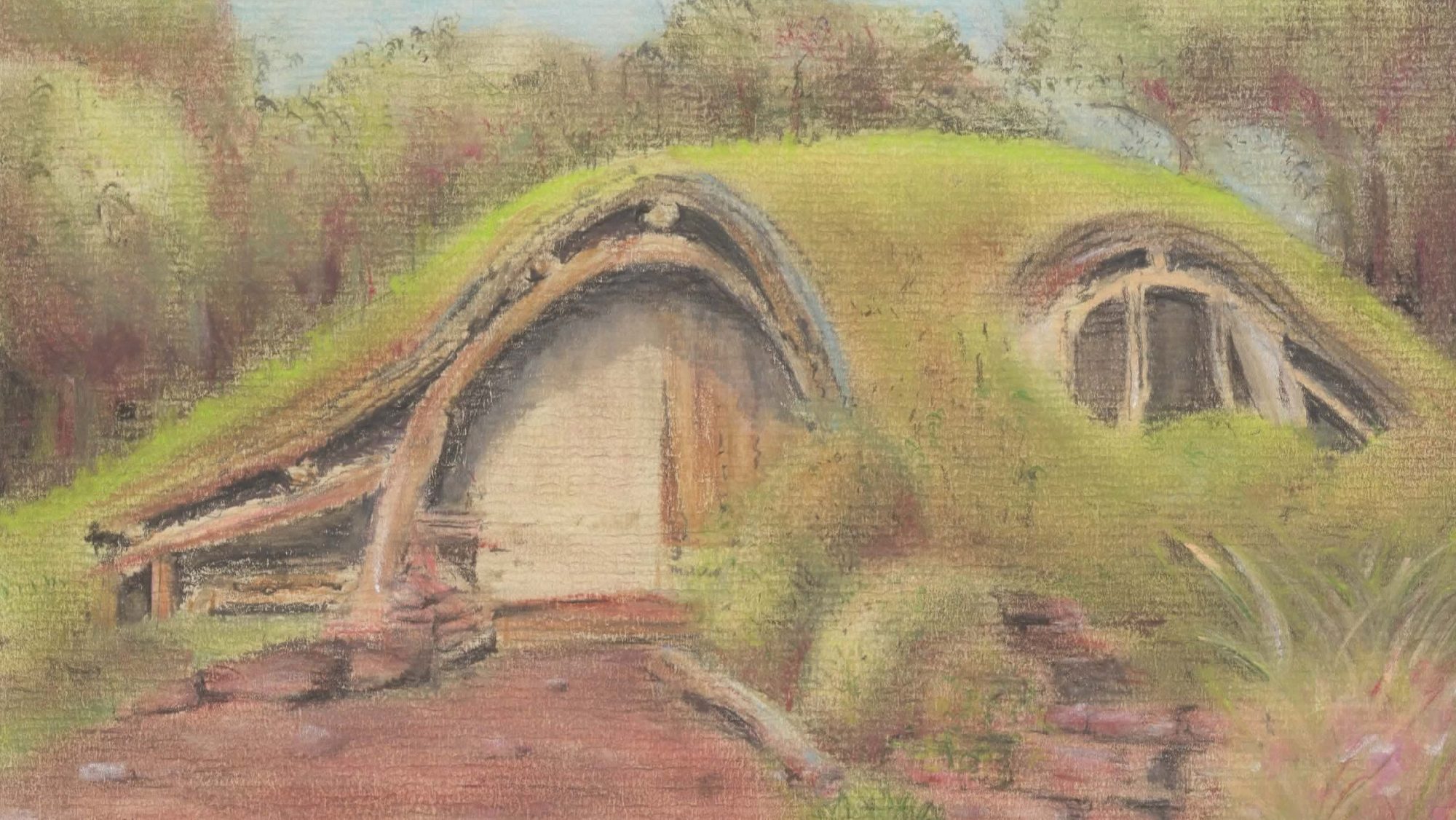


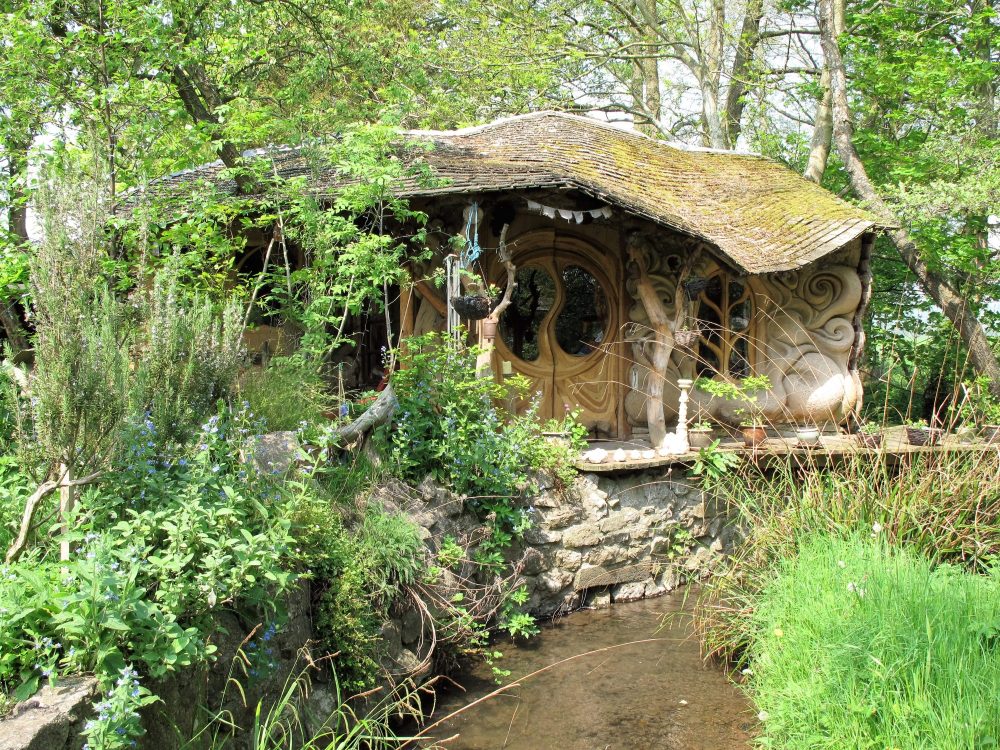
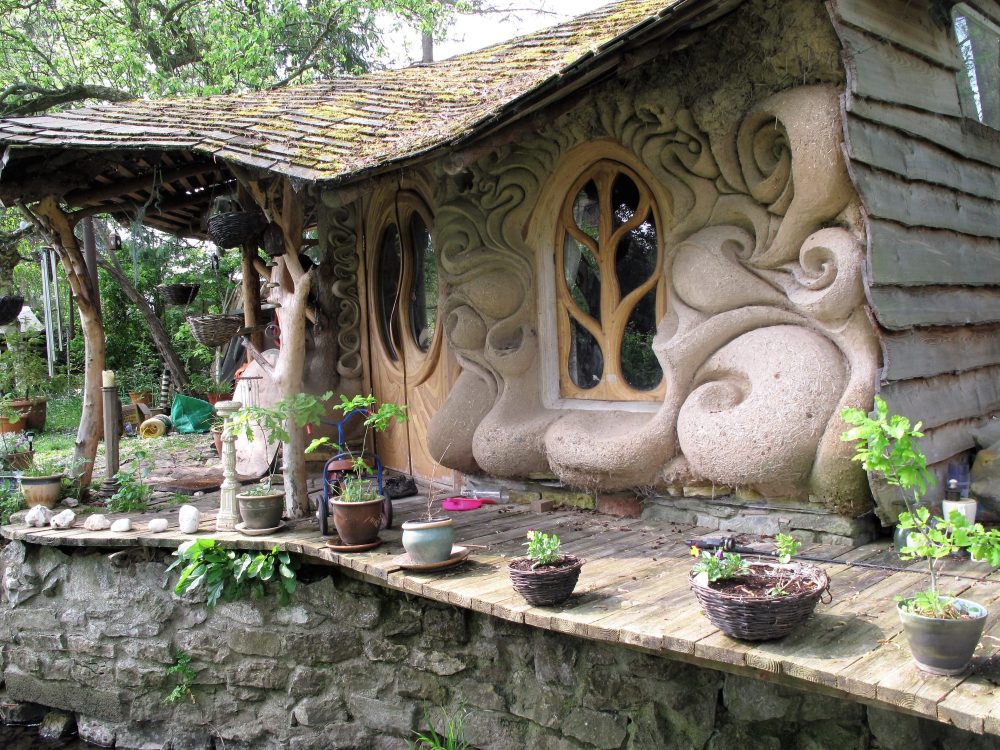

Leave a Reply